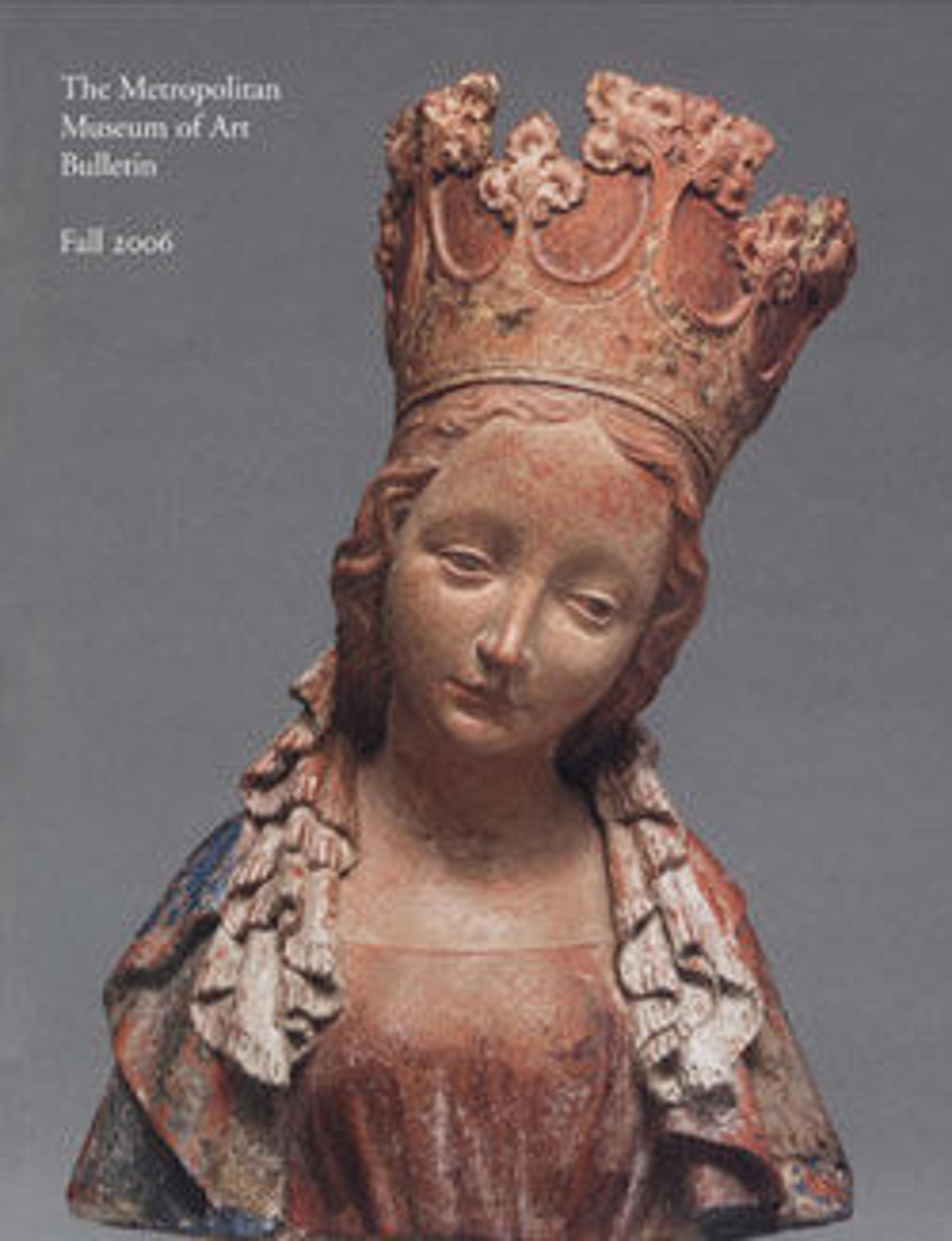Sword Pommel
This handsome sword pommel is one of the finest surviving fragments of Anglo-Saxon goldsmith work. The pommel's quasi-triangular shell, of cast copper alloy, is decorated with silver panels inlaid with niello patterns and framed with silver strips. The two end terminals are animal heads. Although the "cocked-hat" form and the design of the panels look back to late eighth-century sword pommels (examples of which from Windsor, Chiswick, Eyot, and Saint Ninian's Isle are preserved in London, Edinburgh and Oxford), the silver-wire and niello technique used to create the inlaid running spiral patterns on the curved sides seems to have been a specialty of East Anglian metalworkers in the ninth century, during the reign of King Alfred the Great (r. 849–99). Some of the niello designs are similar to those on the well-known Fuller brooch in the British Museum, London, which was made in the late ninth century, perhaps in Alfred's court workshop.
Artwork Details
- Title:Sword Pommel
- Date:late 9th century
- Geography:Made in England
- Culture:Anglo-Saxon
- Medium:Copper alloy inlaid with silver wire and niello on
an iron core - Dimensions:Overall: 1 7/8 x 3 13/16 x 7/8 in. (4.7 x 9.7 x 2.3 cm)
- Classification:Metalwork-Silver
- Credit Line:Purchase, Gift of J. Pierpont Morgan, by exchange, 2005
- Object Number:2005.344
- Curatorial Department: Medieval Art and The Cloisters
More Artwork
Research Resources
The Met provides unparalleled resources for research and welcomes an international community of students and scholars. The Met's Open Access API is where creators and researchers can connect to the The Met collection. Open Access data and public domain images are available for unrestricted commercial and noncommercial use without permission or fee.
To request images under copyright and other restrictions, please use this Image Request form.
Feedback
We continue to research and examine historical and cultural context for objects in The Met collection. If you have comments or questions about this object record, please contact us using the form below. The Museum looks forward to receiving your comments.
